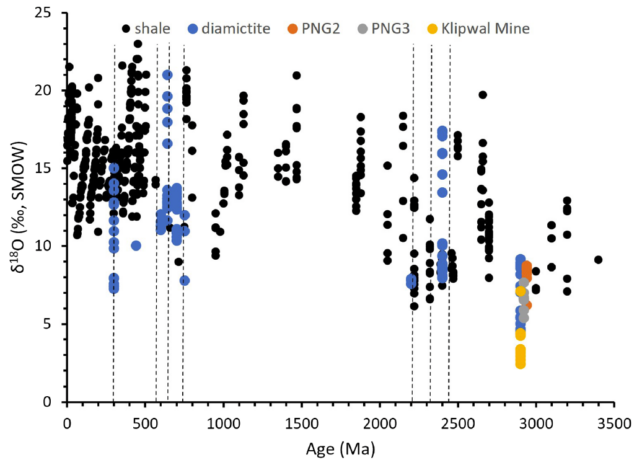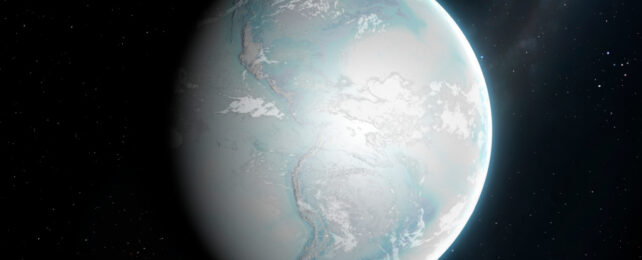Scientists think they've uncovered evidence of the oldest glaciers ever found, in ancient rocks speckled with oxygen isotopes lying beneath the world's largest gold deposits in South Africa.
The discovery could add new lines to an early chapter in Earth's turbulent history, and may explain how those goldfields formed.
A team lead by University of Johannesburg archaean geologist Axel Hofmann analyzed rock beds situated near Durban on the east coast of South Africa that contain glacial deposits estimated to be 2.9 billion years old, making them the oldest known on Earth.
Rocks that old have had a long time to experience a variety of geological changes. Luckily the Pongola Supergroup, as the layers of rock are known, has hardly been disturbed since it was laid down with the flooding of an inland sea all those years ago.
"This is one of the few areas which remain fairly intact and unchanged from the early Earth," explains University of Oregon geologist Ilya Bindeman.
"These deposits are fossilized glacial moraines, which are basically the debris left by a glacier as it gradually melts and contracts."
Bindeman and colleagues measured levels of oxygen isotopes in sandstone and shale samples from the Pongola Supergroup, finding they had the lowest levels of oxygen-18 of any similar deposits analyzed so far. They also had very high amounts of oxygen-17, indicating the rocks formed at colder temperatures.
"This means ice," says Bindeman. "Couple that geochemical evidence with the moraine evidence, and it means glaciers – the oldest glaciers yet found on Earth."

Bindeman presented the findings at an international geochemistry conference earlier this week, based on a recent peer-reviewed paper she co-authored with Hofmann.
Oxygen isotopes are stable, long-lived varieties of oxygen that are either 'heavy' or 'light' depending on the number of neutrons in their nucleus. When geologists compare their relative abundance in ancient rocks, they can deduce the conditions under which those rocks formed.
"As the oxygen isotopic composition of surface materials is strongly dependent on latitude and climate, we have applied triple oxygen isotope analysis to scrutinize their origin," Bindeman and Hofmann write in their paper.
The data "indicate gradual climatic cooling of the surface environments that culminated in glacial conditions at 2.9 billion years ago."
The location of these glaciers raises interesting questions about periods of cooling in the ancient past.
At least twice in its history our planet has frozen over, at a relatively recent 650 and 700 million years ago. But research questions whether this 'Snowball Earth' was a completely frozen wasteland or more like a slush ball, leaving room to debate the extent to which our planet could freeze.
"Scientists believe that this [near-global glaciation] may have happened on a couple of occasions in the more recent past. If so, this would be the earliest such global cooling period recorded," says Hofmann.
Another possibility is that the continent that gave rise to South Africa was closer to the poles at the time it iced over, as Bindeman and Hofmann discuss in their paper.
"Either possibility is scientifically interesting", says Hofmann.
But prizing rocky secrets from the depths of time is no easy feat, and no one study is going to rewrite Earth's early history.
Andrey Bekker, a geochemist at the University of California, Riverside, who was not involved in the work, says the research is "likely to trigger follow-up studies."
"Evidence for glaciation of this age has been hotly discussed and debated for decades based on sedimentological evidence," Bekker says.
However, geoscientists can only infer so much from the way layers of sediment and rocks are stacked on top of one another, or gouged out by ancient ice.
Bekker says Bindeman and Hofmann's analysis of oxygen isotopes "adds an entirely new line of evidence to this argument" that what we're looking at are traces of incredibly old glaciers.
In other words, we should expect these new findings will be closely scrutinized.
The study was published in Geochemical Perspectives Letters, with further results presented at the European Association of Geochemistry and the Geochemical Society's Goldschmidt Conference.
